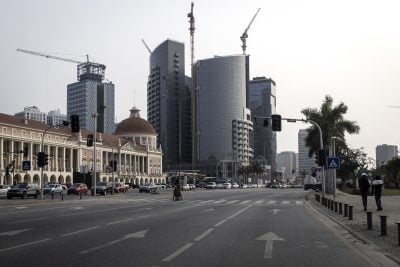With South Africa feeling the effects of the recession and elections looming next year, President Ramaphosa faces a race against time to turn things around.
With his decades-long career in business, a history of sector-spanning investments and close links to South Africa’s corporate elite, President Cyril Ramaphosa was seen by many as an economically astute antidote to years of misrule under predecessor Jacob Zuma. Yet those hoping that the president’s inauguration would spark a rapid turnaround in South Africa’s fortunes were left disappointed by downbeat Q2 data which suggested that far from confidently emerging from years of stagnation, the economy has sunk back into a technical recession after contracting by a further 0.7%. For the president, the quarter-on-quarter decline in GDP represents a blow to a valuable reputation for competent economic stewardship – a status which has given him breathing space to pursue difficult reforms and overhaul Zuma’s toxic legacy.
But with Ramaphosa facing crucial presidential elections next year under significant pressure from the populist left and conservative right, there is now a pressing need for the president to quell opposition jibes of a “Ramacession” by shepherding the economy to jobs and growth. The extent to which Ramaphosa is truly responsible for this state of affairs remains a subject of considerable debate. Since inheriting a broken economy, his administration has pursued a path of pragmatism at odds with the Zuma years by initiating a crackdown on corruption, reforming state-owned enterprises, and offering reassurance to foreign investors. Weighed against such long-term goals, the president remains confident that this recession will prove short-lived.
“All these things that are happening now are transitional issues that are going to pass… I will be meeting with the business community soon, so that we rally everyone together and pull our country out of the situation that we are in,” the president told local media.
Drivers of recession
Indeed, some of the drivers of the recession do appear to be out of government hands. The primary contributor was a prolonged period of devastating drought in the agricultural breadbasket of the Western Cape, which led to agricultural output slumping by 29.2% in the second quarter. That wiped an estimated 0.8% off total GDP – just enough to tip the economy into a technical recession – but is unlikely to last indefinitely. While the ANC’s sluggish response to the drought has been called into question by opposition Democratic Alliance politicians in the Western Cape, Ramaphosa can reasonably argue that a long-term ANC failure to provide alternative water supplies largely predates his administration. He can further point to wider global emerging market turmoil in which South Africa has been unwittingly caught.
Nevertheless, credit ratings agency Moody’s appears less forgiving of his government’s wider record, flagging up the “relatively slow” progress of economic reforms. Data from Capital Economics suggests that difficulties stretch beyond the agricultural sector. While the economy got off to a relatively strong start in the third quarter, buoyed by an encouraging retail sales rise of 1.3% month on month in July and a rise in manufacturing output by 1.6% over the same period, other sectors continue to lag. Output in the crucial mining sector slumped by 5.2% year-on-year in July, a significant disappointment given an apparent improvement between the first and second quarters. August car sales figures disappointed, business confidence weakened, and manufacturing PMI struggled, all of which adds to a worrying picture. Finance minister Nhlanhla Nene predicts that the tax take will be lower this year, placing added strain on fragile revenues.
“The latest retail sales figures add to the evidence that South Africa’s economy made a strong start to Q3… but there is mounting survey evidence that this momentum faded in August. At the very least these figures suggest the economic recovery over the course of Q3 is likely to be bumpy,” says Capital Economics, forecasting full year GDP growth of just 0.8%.
The danger of reform
How the government reacts to this complicated picture could significantly dictate Ramaphosa’s chances at next year’s presidential elections. The ANC remains vulnerable to a backlash from urban voters disenchanted with long-term joblessness, now at 27.2%, and patchy service delivery, while rural voters, long the bedrock of ANC support, could reassess their vote if agricultural stagnation continues to bite.
Meanwhile, a prolonged recession is likely to prompt further calls by the opposition Economic Freedom Fighters and leftist factions within the ANC for the government to pursue radical solutions to South Africa’s longstanding problems. Alive to this threat, Ramaphosa has pledged to go further than any previous ANC government by introducing a comprehensive programme of compulsory land redistribution to the black majority. He argues that such reform is an economic and moral imperative in a country where around 72% of the land is white owned, and says that he will avoid the pitfalls of a violent Zimbabwe-style land grab by focusing on disused and unproductive tracts. Yet Q2’s disappointing agriculture data shows that any attempt to interfere with one of the country’s most important sectors, however well meaning, is fraught with danger and could have devastating consequences for wider growth if mismanaged.
Meanwhile, long-planned attempts to introduce a mining charter legislating for increased black shareholding at mining firms are likely to dent investor sentiment at a time when costs and labour disputes make the sector far from attractive. While few doubt the necessity of Ramaphosa’s reforms for the black majority, the need to consult widely, gain consensus and proceed with caution could not be greater.
Stimulus
Given the complexity and uncertainty of those reforms, there are signs that the government is preparing less controversial plans to offer a boost to the economy. In September, China reportedly offered an economic stimulus package of some R370bn ($25bn), intended to speed infrastructure development and increase the rate of industrialisation.
Days later, Ramaphosa revealed parts of a new domestic reform package to business and union leaders with the intention to “secure confidence in sectors affected by regulatory uncertainty” including mining, telecommunications, tourism and transport, and “reprioritise government spending… towards activities that will stimulate economic activity.” He urged businesses to place a moratorium on job cuts as part of the plan, which will be fully unveiled in October.
Likely to prove less politically contentious than comprehensive land and mining reform and more acceptable to investors, the government hopes that the fast-track reforms could offer South Africa a quick route out of “Ramacession” – and a timely boost to the president’s electoral chances.
David Thomas
Want to continue reading? Subscribe today.
You've read all your free articles for this month! Subscribe now to enjoy full access to our content.
Digital Monthly
£8.00 / month
Receive full unlimited access to our articles, opinions, podcasts and more.
Digital Yearly
£70.00 / year
Our best value offer - save £26 and gain access to all of our digital content for an entire year!
 Sign in with Google
Sign in with Google 


